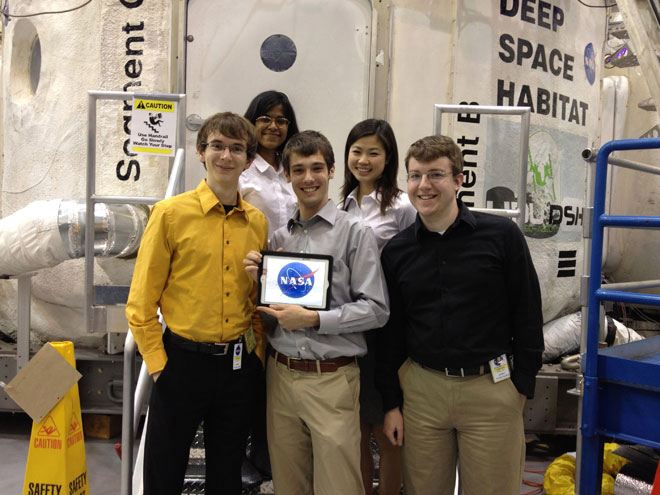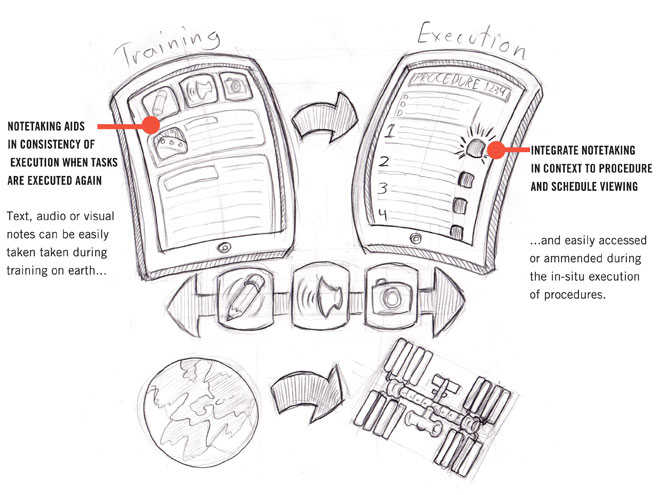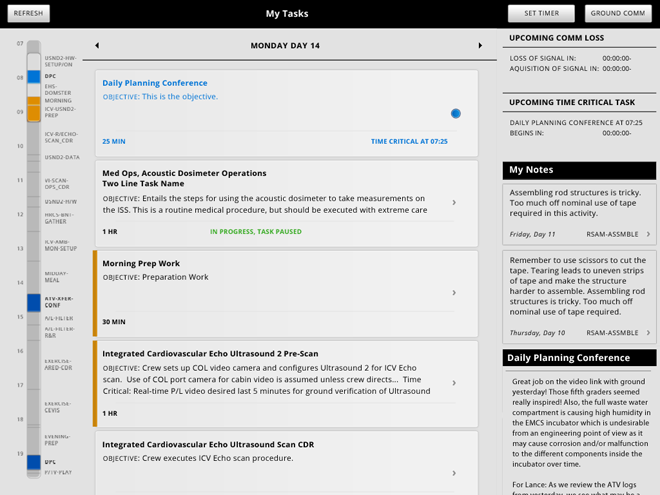
The members of Team Kairos. Left to Right – Joe Medwid, Samia Ahmed, Esten Hurtle, Diana Chen, and Kevin McMillin
Problem Space: Space Problems
NASA's prompt was to reimagine the way that astronauts perform scheduled procedures under unprecedented new conditions, with an emphasis on crewmember autonomy. These conditions might include time delay (it takes a lot longer for radio waves to reach Mars than the moon!), new vehicles like the ORION capsule, or tasks typically beyond the experience of today's astronauts (farming, for example). After a thorough literature review, our first stop was the Johnson Space Center, where astronauts are trained and mission control keeps watch over the ISS. There, we reviewed current scheduling tools, toured potential new habitats, and spoke with those who train astronauts in procedure execution.
The Next Best Thing
Apparently, it's really hard to talk to astronauts, even at NASA. Undeterred, we interviewed current and former NASA personnel, as well as professionals in analogous domains (such as surgery and stage management) as we strove to understand procedure execution and support.

Envisioning the Future of the Future
Synthesizing our research, we concluded the research phase of the project by generating four key insights, each consisting of findings, recommendations, and a vision for implementation. Out full research report can be downloaded here.

Space: Improvised
Soon after arriving at NASA Ames, we launched into several rounds of prototyping, iterative design, and testing. Both the prototype and the test methodology improved in quality and complexity, culminating in using a functional iPad app to follow actual NASA procedures for testing soil PH and replacing air filters. As the user experiencing lead, scheduling, planning, facilitating, and analyzing the results from these tests were among my key responsibilities.
Framing the Solution
Our finished software focused on both flexible schedule browsing (the Home View) and procedure viewing (The Activity View). While designing, we tried to strike a balance between legibility and NASA’s love for data-dense displays.

